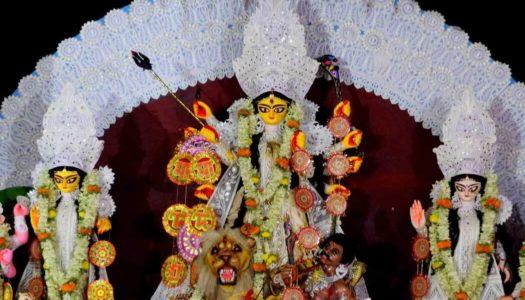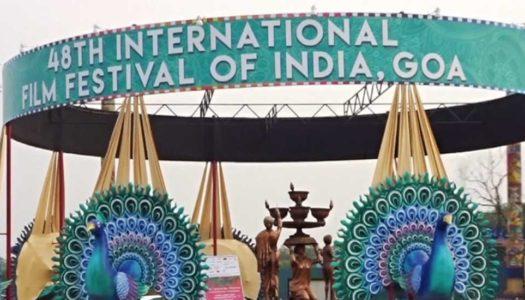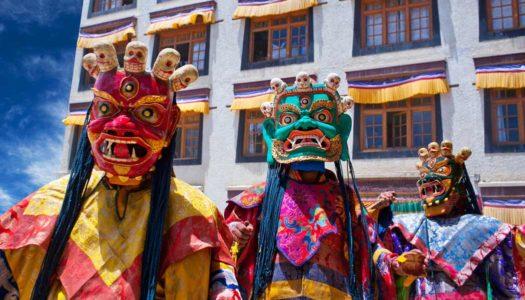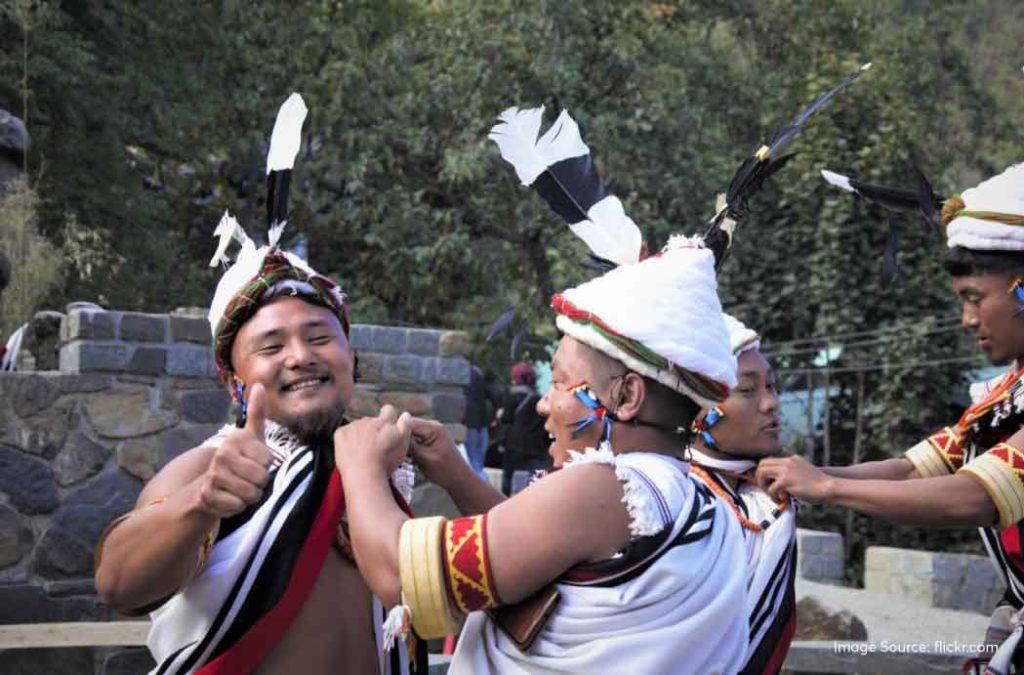
Hornbill Festival is one of the most sought-after festivals in the country and holds great significance to the people of Nagaland. It is all about celebrating the Naga way of life and thanking the universe for bestowing them with happiness and prosperity. The indigenous people and visiting tourists gather to sing, dance, drink, and eat while enjoying themselves. That is not all! There is so much more meaning and depth to this festival. Being a part of the Hornbill Festival in Nagaland is a culturally enriching experience that is sure to transform you for good.
Are you interested to know more?
Read on to find out everything about this spectacular event in Nagaland!
Also Read: Khonoma Village: a Surreal Destination in the Halls of Nagaland
What is the Hornbill Festival?
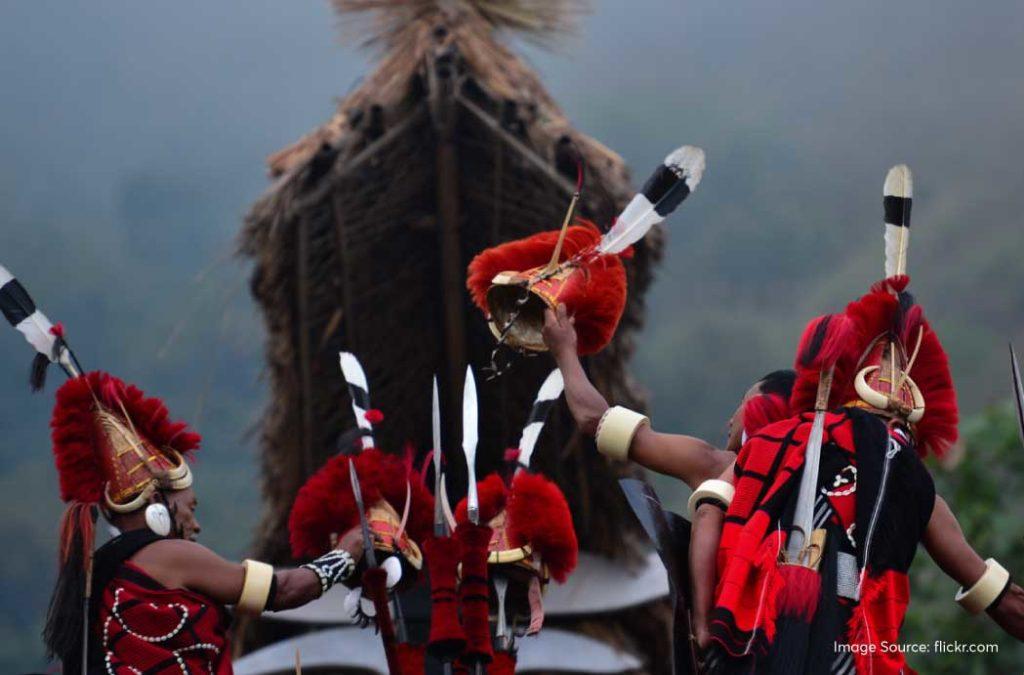
The world has changed and technological developments have made our lives better. Some of the older customs and beliefs are forgotten to pave the way for newer innovations. But that is not how things work in Nagaland. The people of the Naga tribe along with the other sub-tribes go to great efforts to preserve their morals, customs, beliefs and traditional practices. The Hornbill Festival is celebrated to remind each other of these traditional beliefs and bask in the glory of their excellence.
The people of the tribes dress up in their native attires, women cook their signature cuisines, and the men deck up with their spears, armoury, and headgear. Do you know? The men had to fight, compete and win to get their hands on the headgear or the weapons which are considered to be a man’s pride.
People come out to dance, sing the hymns that narrate the story of the land, eat and drink together. The festival gets its name from the bird, the Great Indian Hornbill, which is revered by the people of the Naga tribe. Its colourful feathers and long beak are considered to be symbols of diversity, grandeur and wealth. The festival is so bright and vibrant that the whole land transforms into an impressive kaleidoscope! The youth come forward to perform, entertain and showcase their distinct talents.
Where is the Hornbill Festival celebrated?

The Hornbill Festival in Nagaland is celebrated in the Kisama Heritage Village, Kohima which is about 5km from Nagaland. This is a small place where a large number of Naga tribal people live and most of the events are centered here. However, you will need a permit to come here and we will discuss all about it in the next section.
The Great Indian Hornbill is greatly respected by the native Naga tribe. In the olden days, the feathers of this bird’s plumage were used to decorate the headgear of the warriors. It is a matter of pride and honour. Nagas used to hunt the birds extensively which almost led to their extinction. The government tried to talk them out of it but they were not ready to overlook their customs.
However, when they noticed that the birds were really disappearing in large numbers, the hunting decreased significantly. In 2000, the organisation of the Hornbill Festival in Nagaland began and people began singing songs and praises of the majestic bird during the event.
Know About Other Interesting Rural Villages in India: Rural Tourism: Your Guide to Authentic Village Lifestyle in India
Dates and Permits for the Festival
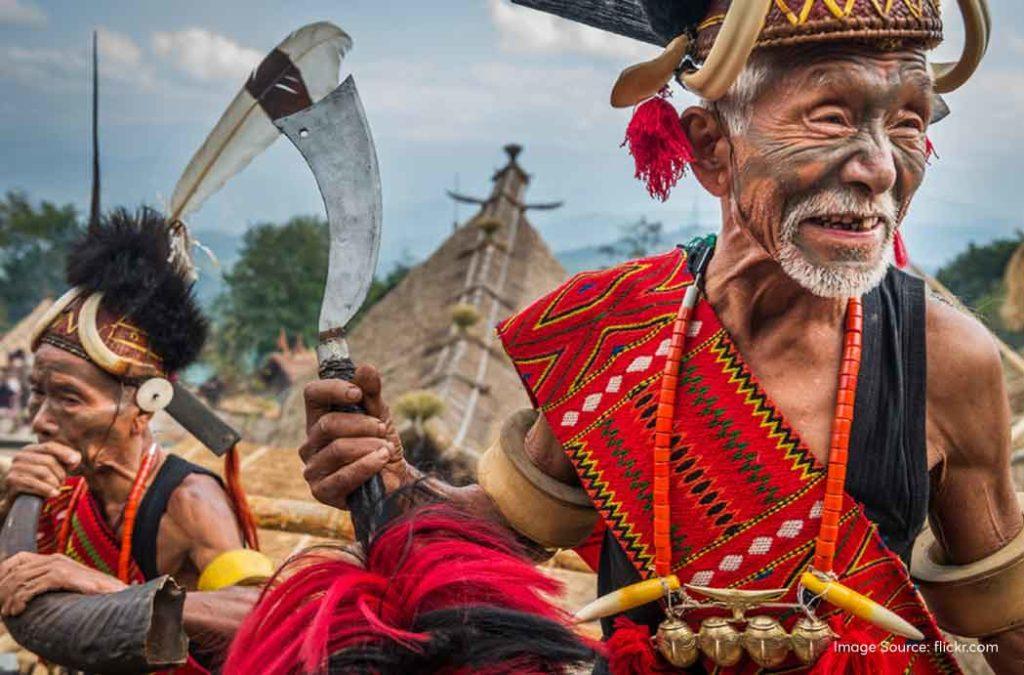
The Hornbill festival will last for a total of 10 days starting from 1st December to 10th December every year. It will begin at 9:30 AM every day. The ticket will cost you around INR 20 – 30 and needs to be purchased for each day before you enter the festive grounds. A mandatory security check will be conducted before you get seated to witness the cultural exhibitions.
However, for those who are not native to Nagaland, you will need an Inner Line Permit to attend the Hornbill Festival. This will cost you INR 50 for 15 days and INR 500 for 365 days. Foreign tourists must also hold a permit to enter the place. Additionally, they must list their names at the local Foreigner’s Registration Office(FRO) within 24 hours of their arrival.
Domestic tourists can get their permit from the office of the Deputy Resident Commissioner in Guwahati, Shimla, New Delhi or Kolkata. Even after coming to Nagaland, you can get a permit from the Deputy Commissioner’s office at Dimapur.
Main Events to cover in the Hornbill Festival
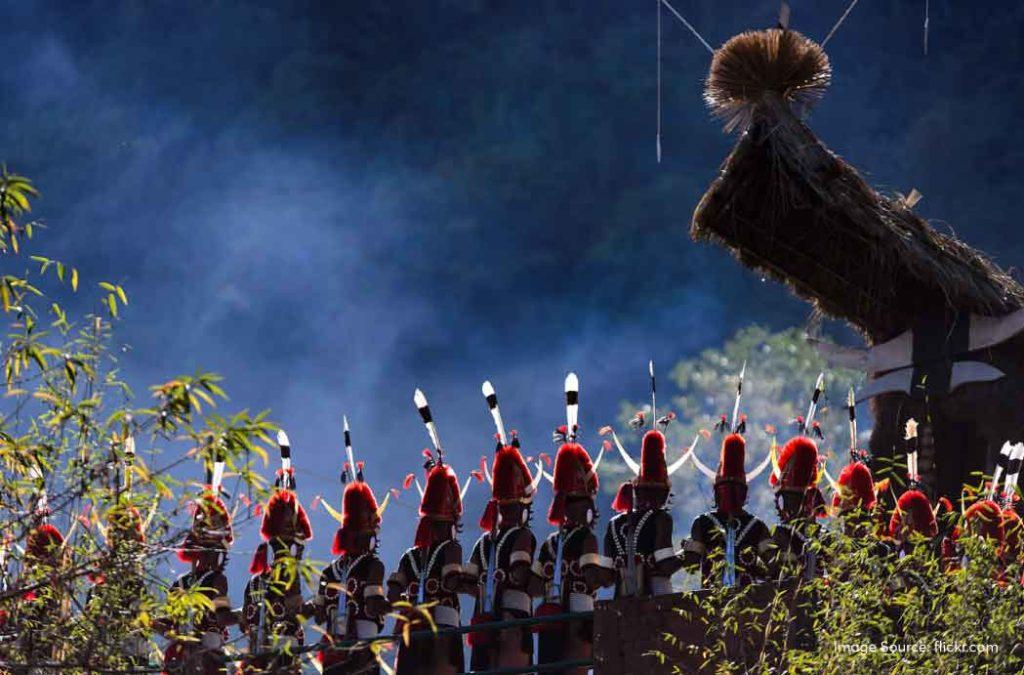
As we told you earlier, the Hornbill Festival is a 10-day event that will keep you entertained throughout. The order of events will differ from year to year but you will find these festive celebrations every time you attend the festival
Cultural Performances
There will be performances by the Naga tribe on all ten days. Each day, you will find a different set of dancers showcasing their talents, the music maestros swaying to the most splendid tunes, and people enjoying the exhilaration and excitement!
Handlooms and Handicrafts
The Hornbill Festival also helps with improving the eco-tourism and local livelihood of the place. The Naga tribal people are known to make some of the best handicrafts that you can use as display items or house decor. The handlooms are great additions to your wardrobe.
Indigenous Games and Exhilarating Sports
There are several indigenous games that the Naga tribal teams play and entertain the crowd during the Hornbill Festival. It is of great significance to them and people who win will walk around with their heads held high for an entire year. You can expect to see Naga traditional wrestling, archery, bamboo pole climbing, rock pulling, spear throwing, traditional foot races and board games like Yubi Lakpi.
Nature Walks and Trekking Trials
Nagaland is a beautiful place with mesmerising exotic flowers, trees and wild animals that are only found in the region. You can go on walks or trekking trails through dense forests to find Blyth’s Tragopan, Kolock Gibbon, Nuthatch, Spotted Linseng, and Southern Red Muntjac.
World War II Rally
The World War II Rally is organised during the Hornbill Festival to commemorate the efforts of the warriors of the battle of Kohima which happened on 2nd December. You will see this procession and display of armoury on 2nd December or the second day of the festival. This rally is a symbol of peace and harmony that the people of Naga want to spred to the world.
Naga King Chilly and Pineapple Eating Competition
Naga cuisine is innately spicy and they use the infamous King Chilly to make the dishes. The Naga Chilly eating competition involves eating as many chillies as possible in a short period of time. The pineapple-eating competition involves the same thing but the competants will be eating juicy pineapples in a short span!
Rock Concerts
You can also see some of the famous local artists, and national and international talents performing on an extravagant stage during the Hornbill Festival. Northeastern talents like Harmonic Voices, Colored Keys, Renbeni, and Angam & Friends performed here.
Bamboo Carnival and Night Carnival
You can enjoy the bamboo carnival where you can see bamboo food stalls, cultural performances using bamboo, bamboo art, artifacts made with bamboo, and workshops where the ecological significance of bamboo is explained to the attendees.
The Night Carnival is a sparkly night bazaar where you will find stalls, craft bazaars, handlooms, handicrafts, bonfires and campfires, and impressive dance processions. With loud DJ music and an unlimited supply of rice beer, you will enjoy the night carnival.
What Should Tourists Do During the Event?

Tourists coming to the Hornbill Festival should not miss out on these splendid things at the event!
- See the traditional dance performances, musical displays, and exhibitions of talents.
- You can see the interesting local games where men and women compete to win. It is fun to cheer for them!
- You can take a walk around the village and see the tribal huts, wooden constructions, intricate carvings, haystacks that act as roofs and more.
- In the end, when the Hornbill Festival winds up for the day, there is a procession of drum beats and other instruments. It is spectacular!
- There are food stalls that offer the delicious northeastern cuisines of Nagaland. The Naga tribe also makes some dishes that are otherwise not found anywhere else. You should couple the food with the chilled rice beer that is very famous in the region.
- Tourists can gear up for the Naga King chilli eating competition! If your stomach can tolerate spice, enter this competition and prove yourself to be the champion. There will be newbies as well as experienced competitors who were a part of the event in the previous years as well.
- Not just the Naga tribe, 16 other sub-tribes also take part in this event. So, you will be seeing a diverse array of cultures in one place.
- You can arrive at the venue early and interact with the dancers and other performers. After seeking their permission, you can click pictures with them and make memories. But remember to be respectful of their choices.
Things to Note for Visitors
There are certain things that the visitors and tourists coming to Nagaland’s Hornbill Festival must do. Think of these as the necessary Do’s and Don’ts that will make your time on this land much more worthwhile.
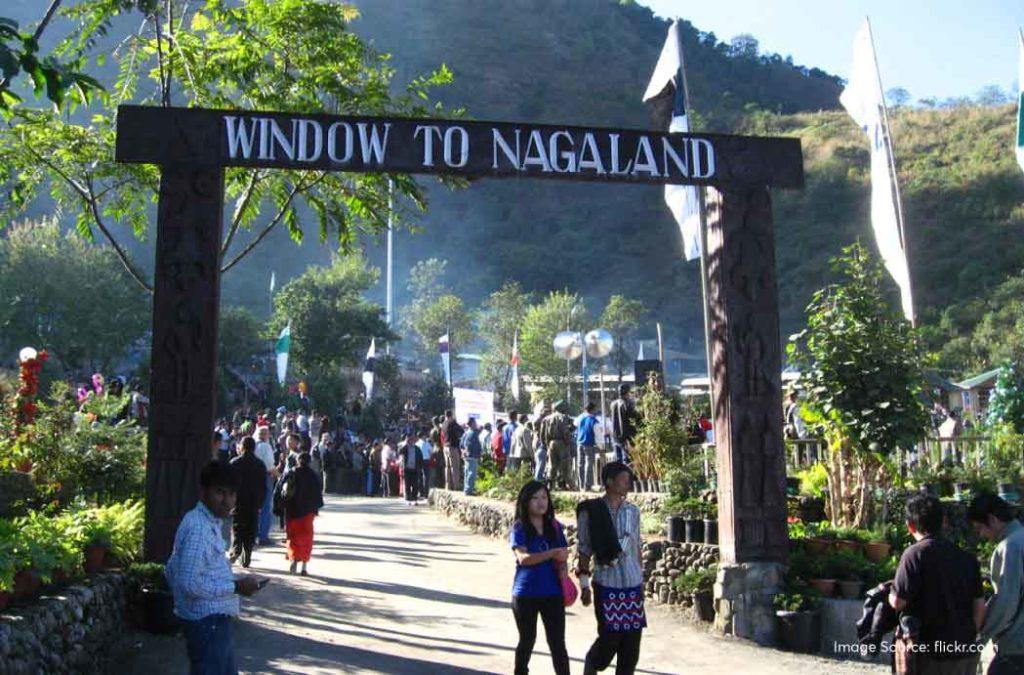
- Do not forget to acquire the Inner Line Permit before entering the village in Kohima. Otherwise, you will be liable for legal action and trust us, you don’t want to deal with the mess that follows.
- Though you can buy your tickets at the venue, we suggest that you make an advanced booking for ten days to avoid the hassle and inconvenience of standing in a long line.
- While interacting with the local tribes, be very respectful of them. Do not cross the line and disrespect their beliefs and customs.
- There are several stalls around the venue where you can buy souvenirs made by local people. You can bargain for the best deals so do not shy away from showcasing your skills.
- It is good for foreign tourists to have the ILP while entering Nagaland but it is not mandatory as it is for domestic visitors. However, it is mandatory to list your name at the Foreigner’s Registration Office.
- Littering is strictly prohibited and the locals frown upon those who dirty their land. So, find the dustbins to properly dispose of your waste and absolutely do not SPIT anywhere in the venue.
- There is an information centre in the Kisama Heritage Village where you can learn everything about the day’s events and the schedule of all 10 days.
How to Reach Kohima – Nagaland
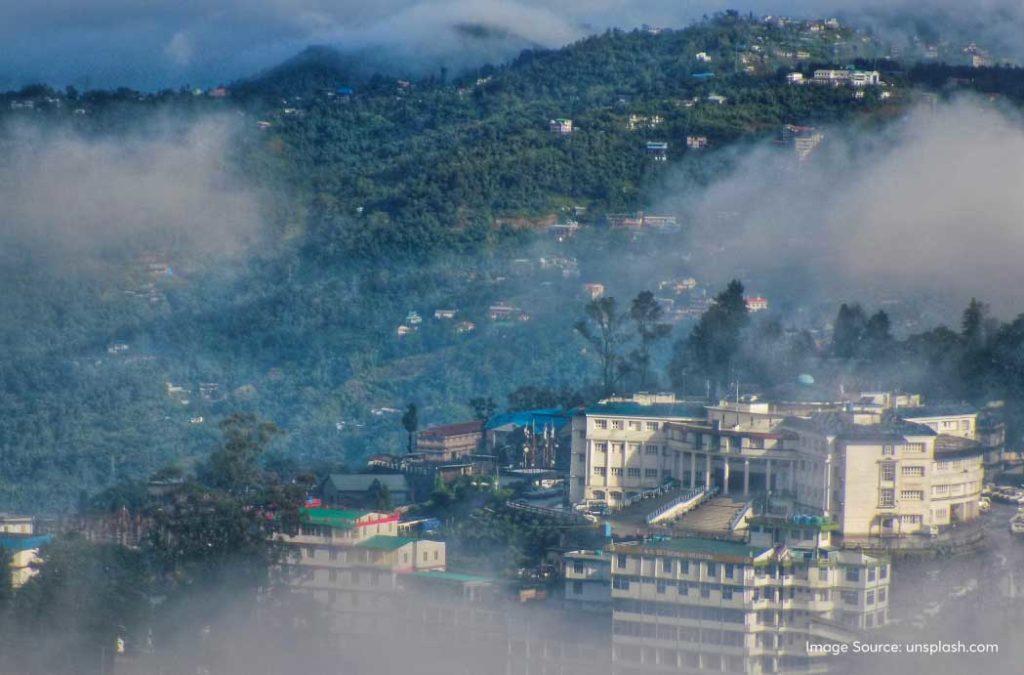
By Air
Kohima doesn’t have its own airport and the nearest one is in Dimapur. It is about 74km away from Kohima. The international travellers should land either in Kolkata, Guwahati or Delhi International Airport. Then, you can take a bus or taxi from these places to Kohima.
By Rail
There are trains from all over India that will bring you to Kolkata or Guwahati. You can also reach Delhi Railway station. Seeing how Kohima is a hilly region, there is no railway station there and you should take a car or bus to reach Kohima from these places.
If you are stopping in Guwahati for a short time before going toward Kohima, you can book your accommodation at Hotels in Guwahati for the most convenient and comfortable stay.
By Road
If you are travelling within the northeastern states like Meghalaya, Arunachal Pradesh, Tripura, Mizoram and Manipur, you will have to take NH39 to reach Kohima. You can also take cabs and taxis to reach Guwahati first and then travel toward Kohima.
The entire setup of the Hornbill Festival in Nagaland is too impressive, isn’t it? Visit this place with your family and friends to have the best gala time ever! Keep 1st to 10th December free in your calendar and you won’t regret the decision!


















